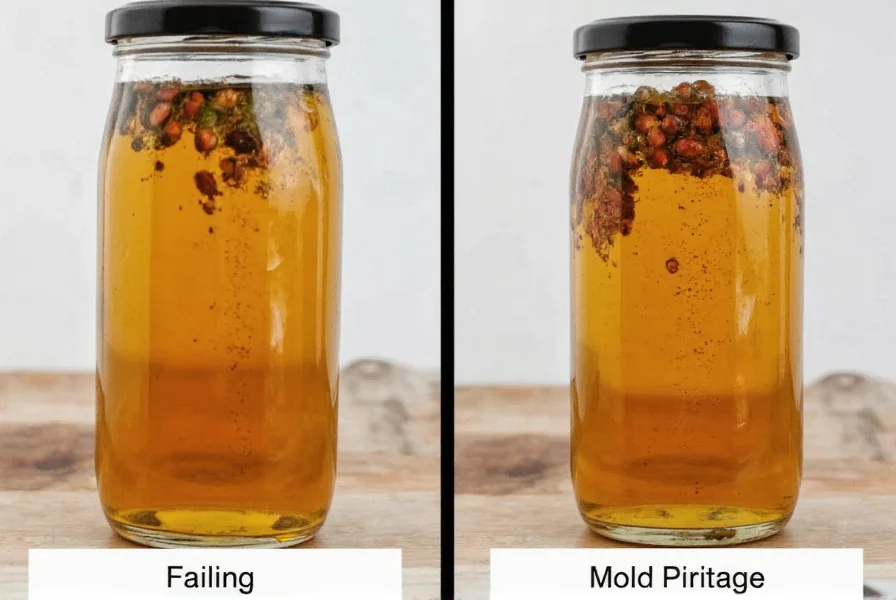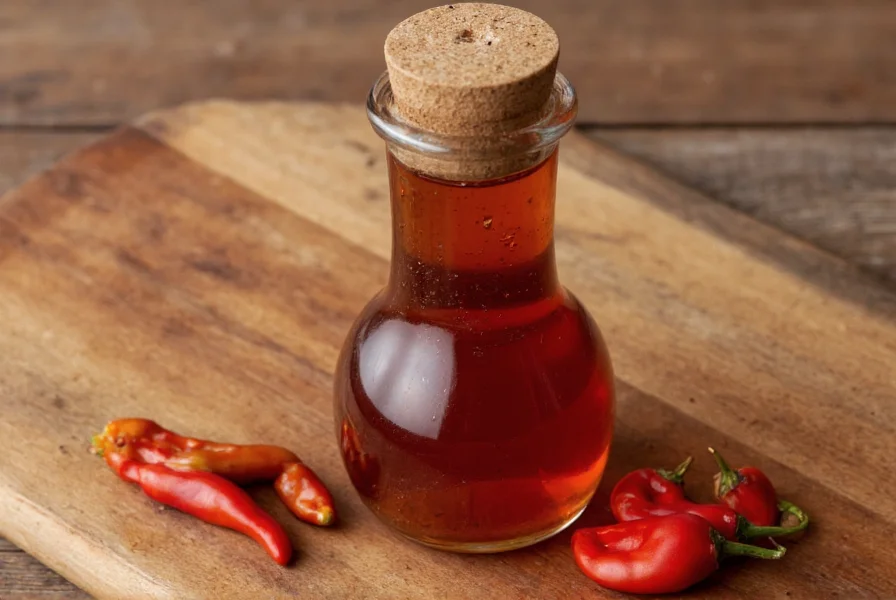Creating exceptional pepper vinegar requires understanding both the science of infusion and the culinary applications of this versatile condiment. This guide explores the complete process of making, using, and storing pepper vinegar to elevate your cooking with minimal effort and maximum flavor impact.
The Science Behind Pepper Vinegar Infusion
Pepper vinegar works through a process called maceration, where capsaicin—the compound responsible for heat in peppers—dissolves into the vinegar. The acidity of vinegar (typically 5-7% acetic acid) effectively extracts flavors while preserving the infusion. White distilled vinegar provides a neutral base that showcases pepper flavors, while apple cider vinegar adds subtle fruity notes that complement certain pepper varieties.
Best Peppers for Vinegar Infusion
Not all peppers perform equally in vinegar infusions. The ideal candidates balance heat, flavor complexity, and structural integrity during the infusion process. Below is a comparison of popular options for homemade pepper vinegar recipes:
| Pepper Variety | Scoville Units | Flavor Profile | Infusion Time | Best Vinegar Pairing |
|---|---|---|---|---|
| Jalapeño | 2,500-8,000 | Grassy, bright, medium heat | 2-4 weeks | White distilled or rice vinegar |
| Habanero | 100,000-350,000 | Fruity, floral, intense heat | 1-2 weeks | Apple cider vinegar |
| Serrano | 10,000-23,000 | Sharp, clean heat | 3-5 weeks | White wine vinegar |
| Thai Bird's Eye | 50,000-100,000 | Intense, immediate heat | 1-3 weeks | Rice vinegar |
Step-by-Step Guide to Making Pepper Vinegar
Creating professional-quality spicy vinegar for cooking requires attention to detail at each stage. Follow this proven method for consistent results:
- Prepare your ingredients: Select 4-6 fresh peppers (washed but not cut), 1 cup vinegar, and optional flavor enhancers like garlic cloves, herbs, or citrus zest
- Sterilize equipment: Clean glass bottles or jars with boiling water to prevent contamination
- Prep peppers: For controlled heat, remove seeds and membranes; for maximum heat, leave them intact
- Combine ingredients: Place peppers in container, pour vinegar to cover completely
- Infuse: Store in cool, dark place for recommended time (check weekly for flavor development)
- Strain and bottle: Remove solids once desired flavor intensity is reached
Maximizing Flavor Development
The pepper vinegar shelf life and flavor quality depend significantly on infusion techniques. For optimal results:
- Use 5% acidity vinegar as lower concentrations may not properly preserve the infusion
- Maintain consistent temperature between 60-75°F (15-24°C) during infusion
- Shake bottles gently every 2-3 days to distribute flavors evenly
- For complex flavor profiles, try sequential infusion—adding different ingredients at different stages
- Test flavor weekly by dipping a clean spoon into the vinegar
Culinary Applications of Pepper Vinegar
Understanding how to use pepper vinegar in cooking transforms ordinary dishes into extraordinary creations. Unlike hot sauces, pepper vinegar integrates seamlessly into recipes without altering texture:
- Salad dressings: Replace regular vinegar with pepper-infused versions for instant complexity
- Marinades: The acid tenderizes proteins while adding subtle heat
- Soups and stews: Add during final cooking stages to preserve bright flavor
- Pickling: Creates spicy pickled vegetables with distinctive flavor
- Cocktails: A few drops elevate bloody marys and other savory drinks
Storage Guidelines for Longevity
Proper storage determines the pepper vinegar preservation duration. Follow these guidelines:
- Store in dark glass bottles to protect from light degradation
- Keep in a cool, dark cupboard away from heat sources
- Ensure bottles are completely sealed to prevent evaporation
- Refrigeration extends shelf life but isn't necessary for properly made infusions
- Discard if cloudiness, mold, or off-odors develop
Well-prepared pepper vinegar maintains peak quality for 6-12 months. The heat level may mellow slightly over time while flavor complexity increases.
Common Mistakes to Avoid
Many home cooks encounter issues with pepper vinegar preparation problems. Prevent these common errors:
- Using damaged peppers: Bruised or soft peppers can introduce bacteria
- Insufficient vinegar coverage: Peppers exposed to air may develop mold
- Over-infusing: Extremely hot peppers can become overwhelmingly spicy
- Using metal containers: Vinegar reacts with metal, creating off-flavors
- Skipping sterilization: Proper cleaning prevents contamination

Pepper Vinegar vs. Commercial Hot Sauces
Understanding the difference between pepper vinegar and hot sauce helps determine when to use each:
- Texture: Pepper vinegar remains liquid while hot sauces often contain thickeners
- Versatility: Vinegar integrates into recipes without altering consistency
- Flavor profile: Vinegar provides bright acidity alongside heat
- Preservation: Higher acidity extends shelf life without additional preservatives
- Culinary function: Vinegar acts as both flavoring and acid component in recipes
Recipe Ideas Featuring Pepper Vinegar
Experiment with these applications of your homemade spicy vinegar creations:
- Spicy Vinaigrette: Whisk 2 tbsp pepper vinegar with 3 tbsp olive oil, 1 tsp honey, and salt
- Quick Pickled Vegetables: Pour warm pepper vinegar over sliced onions, carrots, or radishes
- Asian-Inspired Noodles: Add 1-2 tsp to peanut sauce or ramen broth
- Seafood Cocktail Sauce: Mix with ketchup and horseradish for shrimp cocktail
- Breakfast Boost: A few drops elevates avocado toast or scrambled eggs











 浙公网安备
33010002000092号
浙公网安备
33010002000092号 浙B2-20120091-4
浙B2-20120091-4